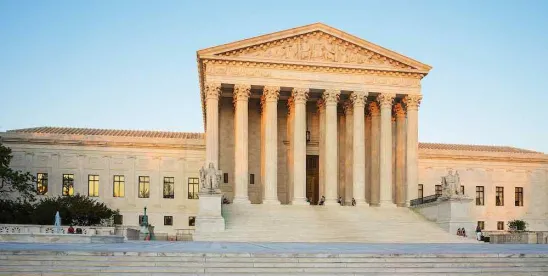In Loper Bright Enterprises v. Raimondo, the US Supreme Court expressly overruled the doctrine of deferring to an agency’s interpretation of allegedly ambiguous statutory language initially articulated in Chevron U.S.A. Inc. v. Natural Resources Defense Council, Inc.
Under the Chevron doctrine, courts applied a two-step framework interpreting statutes administered by federal agencies. The first step asks whether Congress had “directly spoken to the precise question at issue.” Chevron, 467 U.S. at 842. If the statute is clear as to the interpretive question at issue, courts are bound by and must apply the clear meaning of the statute. If, however, the statute is ambiguous or silent, then courts proceed to the second step where they defer to the agency’s interpretation provided it is “based on a permissible construction of the statute.” Id. at 843.
This doctrine of deference, Loper Bright held, is at odds with the imperative that the Administrative Procedure Act (APA) gives to reviewing courts to “decide all relevant questions of law” and “interpret . . . statutory provisions.” 5 U.S.C. § 706 (emphasis added). Because Chevron required reviewing courts to give “binding deference to agency interpretations” instead of exercising their “independent judgment” as to the best reading of the statute, that doctrine “defies the command of the APA” by ceding the authority to decide some questions of statutory interpretation – those involving ambiguous statutes – to agencies. See Slip Op. 21; see also Slip Op. 14 (observing that § 706 “prescribes no deferential standard” for courts to apply when interpreting ambiguous statutes).
IN DEPTH
FINDING THE “BEST” READING OF THE STATUTORY TEXT
In place of the Chevron framework, Loper Bright insists that a reviewing court, when determining the meaning of a statute (even if it is assertedly ambiguous), must “use every tool at [its] disposal to determine the best reading of the statute and resolve the ambiguity.” Slip Op. 23. In other words, the court must use “the traditional tools of statutory construction” to reach its independent view of the “best reading” of the statute – that is, “‘the reading the court would have reached’ if no agency were involved.” Slip Op. 23 (quoting Chevron, 467 U.S. at 843 n.11).
The Court was clear in its view that, when engaging in statutory construction, a court must arrive at a singular result: “It … makes no sense,” the Court explained, “to speak of a ‘permissible’ interpretation that is not the one the court, after applying all relevant interpretative tools, concludes is best.” Slip Op. 23. “In the business of statutory interpretation, if it is not the best, it is not permissible.”
To be sure, courts will still consider some aspects of agency reasoning when construing statutes. Courts may consider an agency’s “power to persuade” rather than “power to control.” Skidmore v. Swift & Co., 323 U. S. 134, 140 (1944). The Court expressly observed that an agency’s experience and subject-matter expertise are among the factors that may give its interpretation the “power to persuade.” Slip Op. 24-25.
RESPONDING TO CONGRESSIONAL DELEGATIONS
As the Court recognizes, some statutes “delegate[] discretionary authority to an agency.” Slip Op. 17-18. There may be circumstances where Congress expressly delegates authority to give meaning to a statutory term “to ‘fill up the details’ of a statutory scheme” or “to regulate subject to the limits imposed by a term or phrase” that gives some flexibility to an agency, like “appropriate” or “reasonable.” Slip Op. 17.
In these circumstances, Loper Bright directs focus on two essential inquiries. The first is whether the agency is operating within “the boundaries of the delegated authority.” Slip Op. 18. The Court’s major questions doctrine will no doubt bear substantially on this analysis, denying agencies authority to regulate issues outside the traditional scope of their authority. A regulation is only valid if the agency acts within the scope of its delegated authority.
The second inquiry is careful analysis of whether an agency has engaged in “reasoned decisionmaking.” Slip Op. 18. This will turn on application of State Farm and its extensive progeny – forbidding agencies from taking actions that fail the several hallmarks of reasoned and rational action.
NEW OPPORTUNITY FOR REGULATED ENTITIES
Loper Bright signals substantially enhanced opportunity for regulated entities to challenge agency rules and actions to insist that agencies strictly comply with statutory mandates. For regulated entities wishing to challenge agency action, it is imperative that they develop a robust record before the agency, as the administrative record is often critical to whether a litigation challenge may ultimately succeed. In Loper Bright’s wake, it is essential to assess a regulatory litigation strategy as one crucial tool when facing administrative challenges.
For a deeper dive, join the authors of this alert for a webinar on July 9 at 3:00 pm (EDT) that will break down the Loper Bright Enterprises v. Raimondo decision and what lies ahead for the business community. Register today.




 />i
/>i

